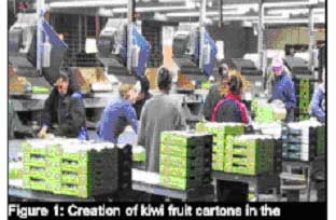
Hangzhou Vegetables also has “ID Card” Farmers Market to use retrospective electronic scales
[ad_1]
How should Hangzhou people buy Anxincai in the future? This scenario simulation appeared yesterday (June 12) at the entrance of Zhongjiang Farmers Market in Tidong Community. It was jointly sponsored by the Provincial Department of Agriculture, the Provincial Academy of Agricultural Sciences, and the Municipal Bureau of Agriculture. At the site of the “Agricultural Product Quality and Safety Entering the Communities” event, a special “traceable electronic scale” was surrounded by Ma’s sisters.
It does not look “post-modern”, but it can print a special ticket. This small ticket is not only a shopping voucher, but also traces the entire process of vegetables from production to market.
Buying, paying, and picking up a vegetable “ID card”, if you don’t rest assured, you can verify it in real time. This is the future “food market strategy” of Hangzhou and even the whole country.
There are 45 vegetable bases in Hangzhou, and you can check the “resumes” of vegetables
In 2010, Hangzhou and 10 cities including Shanghai, Chongqing, Dalian, Qingdao, Ningbo, Nanjing, Chengdu, Kunming, and Wuxi were listed by the Ministry of Commerce and the Ministry of Finance as the first batch of pilot cities in the country to develop a traceability system for the circulation of meat and vegetables. .
If the news at that time could not give everyone a lot of perceptual understanding, then since December last year, the construction of the meat and vegetable circulation traceability system in Hangzhou has been established in the designated slaughter plants in downtown Hangzhou (including Xiaoshan and Yuhang). Meat and vegetable wholesale markets, supermarket stores, and farmers’ markets have been launched successively.
The reporter learned from the investigator Feng Lizhong of the Agricultural Products Quality Supervision Department of the Hangzhou Municipal Agriculture Bureau that at present, Hangzhou has 45 vegetable production bases that have deployed a traceability system as a pilot. All large vegetable bases in the future will enter the traceability system. In the past, ordinary electronic scales that were common in farmers’ markets will gradually be replaced with retrospective electronic scales.
Many people are curious about how the “resume” of vegetables and meat is written? It’s actually quite simple:
Let’s take a green vegetable as an example. This green vegetable will be tested before it is produced from the vegetable base. After it is qualified, it will be affixed with a “Quality and Safety Base Approval Label” with a 20-digit traceability code on the label. After the vegetable with the “hukou book” arrives at the wholesale market, it has to undergo a “physical examination” again. When the vegetable base and the business owner are trading, both parties have to swipe their cards at the same time, so that the traceability code will show the “green vegetable” on the record. Moving” information. By analogy, all the transaction information can be recorded in the traceability code before the vegetable reaches Ma’s basket.
Gouzhuang, Gudang, Wanshouting and other vegetable markets have activated “ID Cards”
The source of production has gradually entered the traceability system. What about the vegetable market? The reporter learned from the Hangzhou Trade Bureau that according to estimates in November last year, the Hangzhou meat and vegetable circulation traceability system is expected to cover more than 200 farmer’s markets.
For example, at the beginning of April this year, the Gouzhuang agricultural and sideline products logistics center began to use retrospective electronic scales. Director Dai, who is in charge of food safety in the Social Affairs Section of Gouzhuang Management Committee, told reporters: “Vegetable bases and vegetable farmers have become accustomed to this process of first testing, then entering, and then forming a traceability code.” According to Director Dai, by this year By the end of the year, if the pilot projects in 10 cities are successful, this traceability system will be rolled out across the country.
At present, in addition to the Gouzhuang wholesale market, large farmer’s markets such as Gudang Farmer’s Market and Wanshouting Farmer’s Market have also fully used retrospective electronic scales.
Zhao Fangming, deputy general manager of the Gudang Farmer’s Market, said that the 25 vegetable stalls and the stalls selling fresh meat in the Gudang Farmer’s Market have been updated to retrospective electronic scales. The vegetable number, for example, 03 is green vegetables, and the stall owner only needs to enter 03, and the traceability code will pop up on the receipt.”
However, many stall owners told reporters that less than 10% of the people who came to buy food asked for a small ticket, and most consumers still turned around habitually after they bought the food.
What is the “trace code”
The ticket contains information on the trading market, booth number, seller, trading time, and trading variety, as well as a 20-digit traceability code.
The 20-digit “traceability code” is equivalent to the vegetable ID number. As long as you enter the traceability code online, a series of production and sales processes for this batch of vegetables will appear, and you can check them at any time. Just like after a successful transaction on Taobao, you can view the “logistics dynamics” and follow up where the express has arrived and who will handle it in real time. The information is completely public and clear at a glance.
[ad_2]




